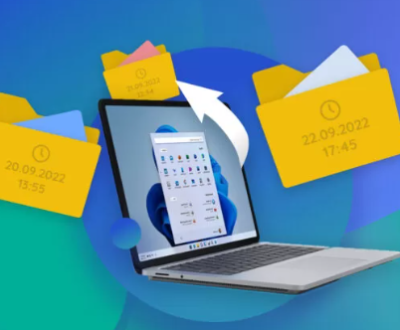External hard disks are a convenient way to store and back up data. However, users may occasionally encounter issues with their devices, leading to frustration and potential data loss.
1. Your Toshiba External Hard Disk
Toshiba external hard disks come in various models, including portable drives and desktop drives. Each model has specific features and requirements, so understanding your particular device is essential for troubleshooting.
Portable Drives: Generally smaller, powered through USB connection.
Desktop Drives: Larger, often requiring an external power source.
2. Common Symptoms of a Non-Working External Hard Disk
Identifying the symptoms can help narrow down the cause of the issue:
Not Detected by Computer: The drive doesn’t appear in File Explorer or Disk Management.
File System Errors: You may encounter messages like “The disk is not formatted.”
Beeping or Clicking Noises: Indicative of mechanical issues.
Slow Performance: The drive takes an unusually long time to respond.

3. Initial Checks
Before diving into more complex troubleshooting, start with these basic checks:
Power Supply: Ensure that the drive is plugged in and powered on (if applicable).
Cable Inspection: Check the USB cable for damage; try using a different cable if possible.
Port Issues: Test different USB ports on your computer. Sometimes, a faulty port can be the culprit.
4. Connection and Compatibility
Compatibility: Ensure that your external hard disk is compatible with your operating system. For example, certain formats may not be recognized by macOS if the drive is formatted for Windows.
Connection Type: If your drive uses USB-C or USB 3.0. ensure that your computer supports these formats.
5. Device Recognition in Disk Management
If the drive isn’t visible in File Explorer, check Disk Management:
Right-click on the Start Menu.
Select Disk Management.
Look for your Toshiba external hard disk in the list.
Possible Scenarios:
Not Initialized: If the disk shows as unallocated, you may need to initialize it.
Healthy but Not Accessible: If it shows as healthy but not assigned a drive letter, you can right-click and assign a new letter.
6. Checking for Driver Issues
Outdated or corrupt drivers can lead to recognition issues:
Open Device Manager:
Right-click the Start Menu and select Device Manager.
Locate Disk Drives:
Find your Toshiba external hard disk under “Disk drives.”
Update Driver:
Right-click the device and select Update Driver. Choose the option to search automatically.
Uninstall and Reinstall:
If updating doesn’t work, right-click and select Uninstall device. Disconnect the drive and reconnect it to reinstall drivers.
7. Running the Hardware and Devices Troubleshooter
Windows has a built-in troubleshooter that can help diagnose hardware issues:
Open Settings and navigate to Update & Security.
Select Troubleshoot and then click on Additional troubleshooters.
Find and run the Hardware and Devices troubleshooter.
8. Checking for File System Errors
File system errors can prevent access to your external hard disk:
Open Command Prompt as Administrator.
Type the command: chkdsk X: /f (replace X with your drive letter).
Press Enter and let the system check for errors.
9. Data Recovery Solutions
If the drive is still not functioning, consider using data recovery software. This is particularly important if you need to recover critical data before attempting repairs:
Popular Software Options:
Recuva
EaseUS Data Recovery Wizard
Stellar Data Recovery
Make sure to follow the software instructions carefully to maximize your chances of recovery.
10. Formatting the Drive
If data recovery is not a concern or has been completed, formatting the drive might be a solution:
Backup Important Data: Ensure any recoverable data is saved.
Format the Drive:
Open Disk Management.
Right-click the Toshiba drive and select Format.
Choose the file system (NTFS for Windows, exFAT for cross-compatibility).
Follow the prompts to complete the format.
11. Checking for Physical Damage
If you hear unusual noises from the drive, it may indicate physical damage. In this case, avoid using the drive further to prevent data loss and consult a professional data recovery service.
12. Contacting Toshiba Support
If none of the above solutions work, contacting Toshiba support may be necessary. They can provide guidance specific to your model and warranty options for repairs or replacements.
Troubleshooting a non-working Toshiba external hard disk can be a daunting task, but with careful analysis and systematic checks, many issues can be resolved. Remember to regularly back up your data to prevent loss in the future, and always handle your external drives with care to maintain their longevity.
About us and this blog
Panda Assistant is built on the latest data recovery algorithms, ensuring that no file is too damaged, too lost, or too corrupted to be recovered.
Request a free quote
We believe that data recovery shouldn’t be a daunting task. That’s why we’ve designed Panda Assistant to be as easy to use as it is powerful. With a few clicks, you can initiate a scan, preview recoverable files, and restore your data all within a matter of minutes.
Subscribe to our newsletter!
More from our blog
See all postsRecent Posts
- How to restore deleted images 2025-06-30
- How to restore a deleted file on windows 2025-06-30
- is there any way to restore deleted photos 2025-06-30

 Try lt Free
Try lt Free Recovery success rate of up to
Recovery success rate of up to









